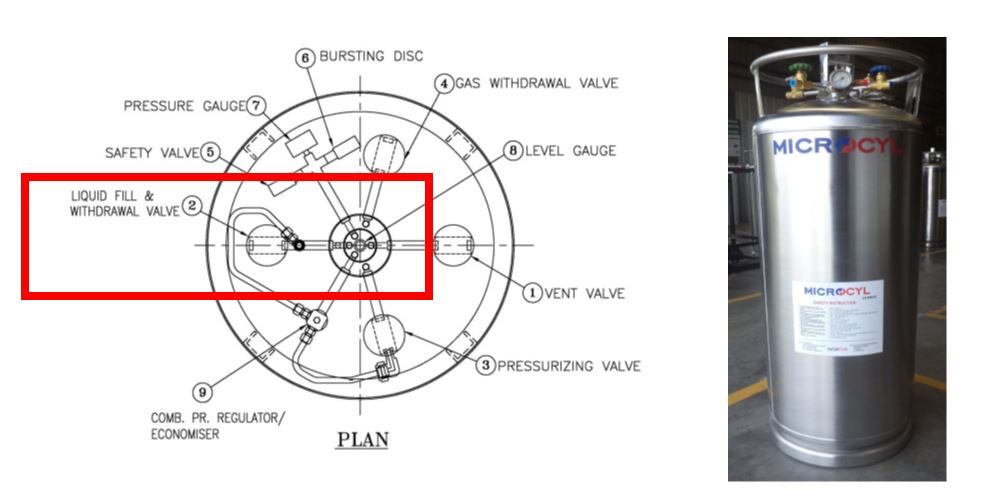What Happened?
The hose of the nitrogen tank flung around because of high tank pressure.
What went right?
- Excessive amount of gas evacuated via ventilation system.
- None get injured. Property damage occurred.
- Required PPE was worn.
What should be done differently?
- Tank pressure gauge should read 1.5 bar for liquid transfer.
- Personal protective equipment (PPE) should be worn: lab coat, cryogenic gloves, face shield, cryogenic shoe cover, long pants, and closed-toe shoes.
What corrective actions have been taken?
- A meeting organized with the supplier company.
- During the new purchase, information on the phase of nitrogen (liquid or gas) will be shared with the supplier company.
How can incidents like this be prevented?
- Always check the tank pressure before starting to work.
- Slowly open the liquid fill valve. Do not fully and/or quickly open the valve.
-- Liquid is filled or withdrawn from the container through the valve shown below:
- Always wear required PPE

- DO NOT WORK ALONE!
- High concentrations of nitrogen can cause ASPHYXIATION in a confined area.
- Direct skin or eye contact with liquid nitrogen can cause CRYOGENIC BURNS, FROSTBITE, and EYE DAMAGE.
- Always wear a cryogenic shoe cover before starting to work.
- Always read the safety instructions on the laboratory wall before you start.